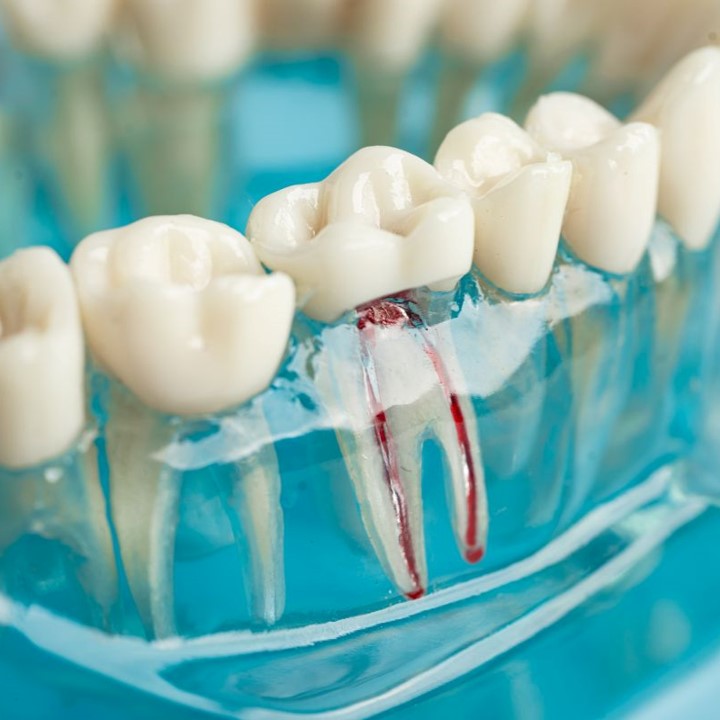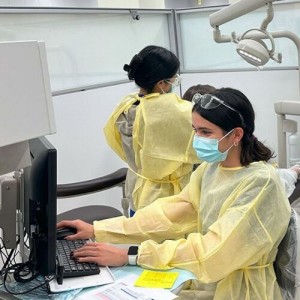
Evaluation of the Role of Probiotics in Endodontic Treatment
Aims and Objectives:
The principal goal of endodontics is the prevention of periapical infection. Acute and chronic apical periodontitis occur due to the persistence of pathogenic microorganisms such as Enterococcus faecalis and Candida albicans harboring the root canal systems of the teeth. The concept of the use of probiotics in addressing endodontic disease is new and has not been studied adequately. On the basis of the success of probiotics in periodontal treatment, this preliminary work was performed (a) to evaluate the antibacterial efficacy of probiotics against common endodontic pathogens, i.e. E. faecalis and C. albicans, and (b) to evaluate the potential use of probiotic therapy as an additive in endodontic treatment procedures.
Materials and Methods:
Two commercial probiotics were selected and evaluated based upon the numbers and concentration of organisms. Pathogenic test organisms were C. albicans (ATCC 10231) and E. faecalis (ATCC 29212). Phase 1 of the study was conducted by agar cup method test to evaluate the antibacterial activity of the selected probiotics against E. faecalis and C. albicans by measuring zones of inhibition (ZOI) in mm. Microorganisms from probiotic samples were isolated following manufacturer's instructions. Pathogenic organisms were set to a 0.1 McFarland standard challenge. Circular wells of 8 mm diameter were punched in each of the poured plates. Appropriately diluted test samples were added to the above-punched wells. The volume of the solution added to each well was 100 μl. The plates were incubated in an upright position at 37°C for 24 hours under aerobic conditions. Post incubation, ZOI was measured (mm). Phase 2 was conducted by mixing 9 ml of 30% poloxamer 407 and de Man, Rogosa and Sharpe (MRS) broth in a test tube with 500 μl of either E. faecalis or C. albicans set at an optical density (OD) of 0.252, together with 500 μl of test probiotic strain, set at a respective OD. Samples were then incubated at 37°C for 48 hours, followed by serial dilutions by 1 ml till 108. This was done to calculate colony forming units (CFU)/ml counts. Controls used were endodontic pathogens in 30% poloxamer with MRS broth without any probiotic group.
Results:
Probiotic groups showed inhibitory activity against E. faecalis by the agar cup method, whereas there was no effect on C. albicans. In the biofilm stage, both the test groups had an antibacterial effect on pathogenic organisms.
Conclusion:
This study suggests that probiotic organisms of the species Lactobacillus and Bifidobacterium are effective for preventing the growth of E. faecalis and C. albicansin vitro. Because probiotics are available in varied compositions and concentrations, further evaluation for their role in treating endodontic infection is suggested and warranted. In addition, the study suggested that poloxamer 407 could be utilized as an ideal delivery vehicle for probiotics for use as a potential endodontic intracanal medicament.
Authors: Bohora, Aarti; Kokate, Sharad
Source: https://journals.lww.com/
 Related articles
Related articles
Restorative dentistry 12 September 2025
Traumatic tooth injuries involve function and aesthetics and cause damage that range from minimal enamel loss to complex fractures involving the pulp tissue and even loss of the tooth crown.
Endodontics 18 August 2025
Factors influencing the long-term results of endodontic treatment: a review of the literature
The purpose of this review of the literature is to examine the factors and their influence on the outcome of endodontic treatments, and also to attempt to have an authors’ consensus concerning the...
Oral Hygiene & Prevention 20 December 2024
Oral hygiene evaluation for effective oral care in preventing pneumonia in dentate elderly
The purpose of this study was to establish criteria for the visual evaluation of oral hygiene by analyzing the relationship between status of oral hygiene and number of oral bacteria in saliva for...
Pediatric dentistry 27 June 2024
Intrusion is defined as the axial dislodgment of the tooth into its socket and is considered one of the most severe types of dental trauma.
Implantology 27 May 2024
Zirconium implants: evaluation of the long-term success of different implant designs
Zirconium dental implants have survival and success rates (acceptable and comparable to titanium implants) that reach 95% after the first year, then decreasing by 0.05% annually in the following 5...
 Read more
Read more
Editorials 10 October 2025
With proud smiles and crisp white coats, ninety-three learners from the DDS Class of 2029 and the International Dentist Pathway Class of 2028 marked the start of their dental careers at the UCSF...
Periodontology 10 October 2025
Continuous professional development (CPD) in Periodontology refers to the overall framework of opportunities that facilitate a life-long learning practice, driven by the learner-practitioner and...
TheraBreath, the #1 alcohol-free mouthwash brand in the U.S.*, has introduced a new line of dentist-formulated, clinically tested toothpastes designed to support professional oral care...
News 10 October 2025
New officers and trustees were installed at the Minnesota Dental Association’s Leadership Conference on September 19 in Minneapolis.
News 10 October 2025
Smartee Denti-Technology today announced that Professor Gang Shen, its Chief Scientist and Executive President of TaiKang ByBo Dental, has once again been named to the World’s Top 2% Scientists...















